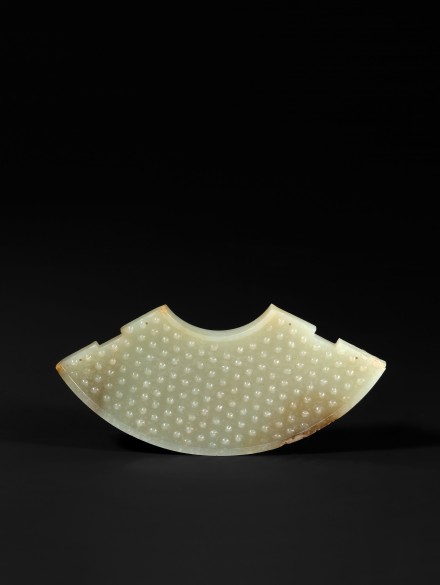J.J. Lally & Co., Oriental Art / New York City, New York
Menu
64.
A WHITE JADE ARC SHAPED PENDANT (HUANG)
Eastern Zhou Dynasty, 4th – 3rd Century B.C.
of broad, gently curved form, recut in antiquity from a circular bi disc, finely carved on both sides with an all over grid pattern of comma-spirals in high relief above a highly polished ground enclosed by canted borders and flat polished edges along the inner and outer rims, the blunt ends each with a squared inset at the center and pierced with two tiny holes for suspension, the white jade of very pale greenish tint with tan and brown streaks.
Length 6 inches (15.3 cm)
A similar jade huang pendant of smaller size in the British Museum is illustrated by Rawson, Chinese Jade from the Neolithic to the Qing, London, 1995, p. 267, no. 17:6.
Another similar jade huang pendant, almost identical to the example in the British Museum, formerly in the Falk Collection and now in the collection of the Metropolitan Museum of Art, is illustrated by Ayers and Rawson in the catalogue of the O.C.S. special exhibition at the Victoria and Albert Museum, Chinese Jade Through the Ages, London, 1975, p. 48, no. 107.
Compare also the jade huang pendant illustrated by Loehr in Ancient Chinese Jades from the Grenville L. Winthrop Collection in the Fogg Art Museum, Harvard University, Cambridge, 1975, p. 331, no. 485.
東周 穀紋玉璜 長 15.3 厘米
64.
A WHITE JADE ARC SHAPED PENDANT (HUANG)
Eastern Zhou Dynasty, 4th – 3rd Century B.C.
Length 6 inches (15.3 cm)